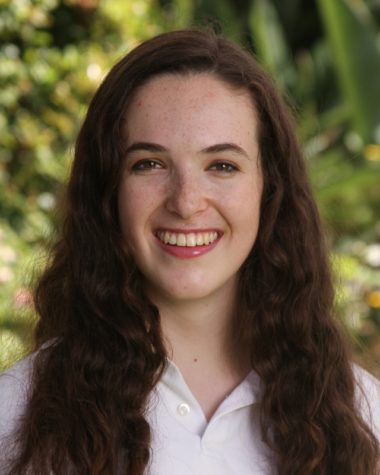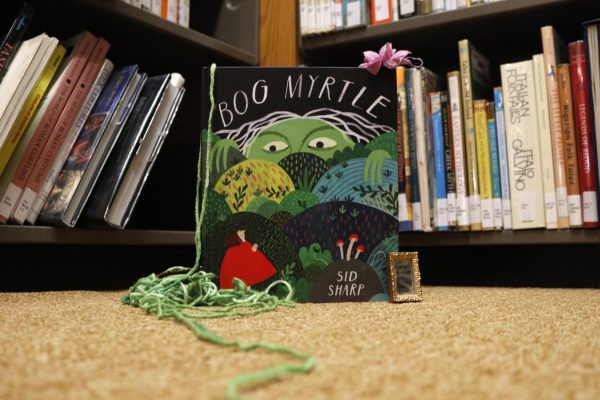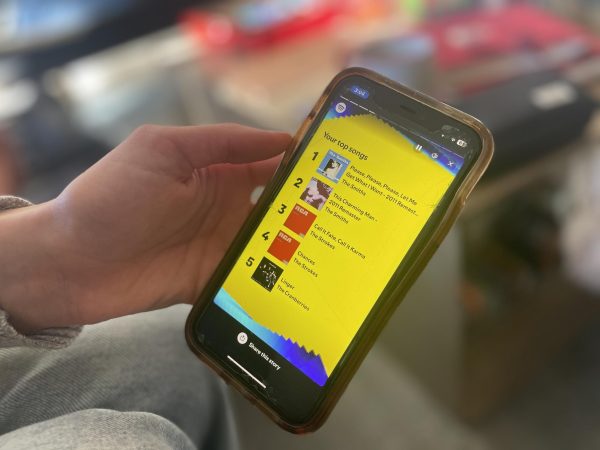Chief Curator at Hammer Museum visits Archer, offers career advice
Photo credit: Meghan Marshall
Connie Butler, chief curator of the Hammer Museum, addresses her audience of Archer students, many of whom are interested in gallery work.
Connie Butler, chief curator for UCLA’s Hammer Museum and a girls’ school graduate, visited Archer on March 10 as a guest of the Eastern Star Gallery team to explain her career trajectory and offer advice to students interested in the art world.
Butler, who graduated from Los Angeles’ Marlborough School in 1980 and Scripps College in 1984, gave her audience insight into her commitment to feminist art, political activism and a progressive workplace. She walked students through her journey in museum curating which led to the Hammer, noting her unique connection to Los Angeles art.
“It was important for me to get out of Los Angeles in order to come back,” she said of the city. “I now think this is the most interesting city for art in the U.S. and beyond, but it wasn’t at the time. So it sort of took leaving to want to come back.”
She also mentioned her time in all-girls’ schools and what those educational experiences mean to her.
“I’m very much a product of girls’ and women’s education, and so I’m really excited to be here for that reason,” she said. “I will say that through women’s education, there was a kind of empowerment I got in both the high school and college experiences that has been really important to me.”
Butler told students about her initial passion for art history, which led to her eventual career, and touched upon some of her professional highlights.
“I’ve often thought that, working on the West Coast, our relationship to certain histories is quite malleable and liberating,” she explained. “In New York, there are a lot of entrenched ideas about the history of modernism in art, for example. And how a place like MOMA displays that history and narrates that history is extremely conservative.”
Once at MOMA, Butler began searching for ways to increase diversity and social awareness within the museum. She was one of the primary organizers of a MOMA symposium entitled “The Feminist Future: Theory and Practice in the Visual Arts,” which achieved record attendance.
She mentioned that one of the highlights of her art career was a survey of feminist work that became widespread and influential.
“I organized an exhibition that has become quite important, though I didn’t know that it would. I organized the first major survey of feminist art in this country,” she said. “It was kind of a watershed moment for women’s issues in the culture.”
What’s most important to me is that my feminist politics and my commitment to issues of gender parity are deeply internalized in everything I do. All the decisions I make as a curator are extremely political, and they’re small, but they add up,” Butler said.
Butler also offered advice to young women who were interested in entering the art world or succeeding in their professional lives in general.
“If I could do it over again, I would have been a lot more aggressively vocal sooner, because I was totally unprepared for the reality of what it would be like to sit in that room with those men. The fact that you can even ask me [how I handled being a woman in a male-dominated field] is amazing. When I was your age, no one would have said anything like that, so you’re going to be fine.”

Eloise Rollins-Fife joined the Oracle staff in 2015 and was promoted to co-Voices editor in 2016. She became the Managing/News & Features Editor for...








